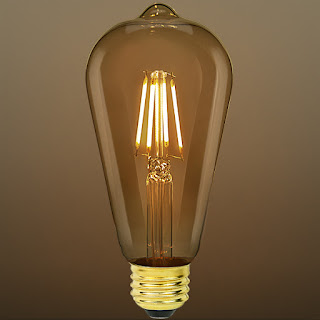 |
Union Station, Washington DC: In the heyday of
rail travel, you really knew you were going someplace.
(Architects: Daniel Burnham and. Ernest. R. Graham, 1907) |
Flying isn’t what it used to be. While the coronavirus and stay-at-home orders may become the proverbial nail in the coffin for the romance of travel, things were on the decline long before that. By the 1990s, air travel had already become overly familiar, even routine; but that was before 911 made many Americans equate airplanes with doom and destruction. But there's another, literally concrete reason that flying has lost much of its romance: The modern urban airport just isn’t the sort of place we’d like to spend time in.
The mechanics of travel weren’t always something merely to be endured. During the heyday of the passenger railroads, arriving, departing, or even just hanging around in one of the great major terminals--whether Portland, Cincinatti, or Washington DC--was an experience to remember. A first-time visitor couldn’t help but feel thrilled in such a temple of travel.
 |
Exterior of the main terminal at Atlanta's Hartfield-Jackson
International Airport. It's the busiest airport in the US—
and perhaps one of the least attractive. |
Approaching an unfamiliar airport, on the other hand, more often elicits a rising sense of dread. Even the most architecturally celebrated of them are maddeningly difficult to navigate. For example, after an eternity of construction bedlam, San Francisco’s airport finally boasts a magnificent new International Terminal. Yet reaching it from either the highway or from public transportation remains a nightmare for any first-time visitor.
Most of us navigate airports by one of three methods, the only reliable one of which involves already knowing the way. Failing that, we walk around slack-jawed, trying to figure out directional signs that ought to be obvious, or else we simply follow the crowd and eventually stumble onto our objective.
 |
Santa Barbara, California's charming municipal airport.
(Architects: William Edwards and Joseph Plunkett, 1942) |
With all this confusion within, don’t even ask about what airports look like from the outside. What with changing technologies and endless reconstruction, architects long ago gave up trying to give airport exteriors a unified appearance.
Of course, there was a time when airports, like railroad terminals, were designed to look all-of-a-piece. Among the few that survive largely intact are the modest but remarkable Spanish Revival gem in Santa Barbara, California.
 |
Architect Eero Saarinen's TWA terminal at New York's
JFK airport really got the "architecture inspired by flight"
design theme a standard, not to say trite, theme for airports. |
When Modernism hit town, though, it became fashionable for airports to be inspired by the objects they served: aircraft. This was a refreshing concept back in the early 1960s, when Eero Saarinen completed his famously swoopy TWA terminal at New York’s Kennedy (then Idlewild) Airport. Alas, architects have drunk from the same well countless times since--albeit without Saarinen’s audacity--thereby turning the concept into a well-worn cliche.
In the ensuing decades, it’s become acceptable for airports to be disjointed aesthetic jumbles so long as they vaguely resemble airplanes, with lots of shiny metal, curvy plastic panels, and carpeting on the walls. Never mind that there’s no intrinsic reason why an airport lounge should look like the cabin of a 747, any more than your garage should look like the inside of a Toyota.
 |
Wichita, Kansa is a city long associated with aircraft
manufacture, and its airport features the usual aircraft-like
interior. But would you build your garage to look
like a Toyota? |
Today, with the growing despair over security, overcrowding of terminals and airplanes, and the now even-shakier financial shape of the airline industry, airport architecture seems likely to remain stuck in the plastic-and-stainless steel rut it has occupied for decades.
Rail travel never did regain its cachet after World War II, and the palatial terminals of railroading’s golden age sadly gave way to mundane structures that could barely compete with the local Greyhound station. Likewise, perhaps, the airport’s day as a romantic portal to other worlds has been doomed by the very ordinary thing that air travel has become. Short of rocket rides to the moon, I wonder what can replace it.





















